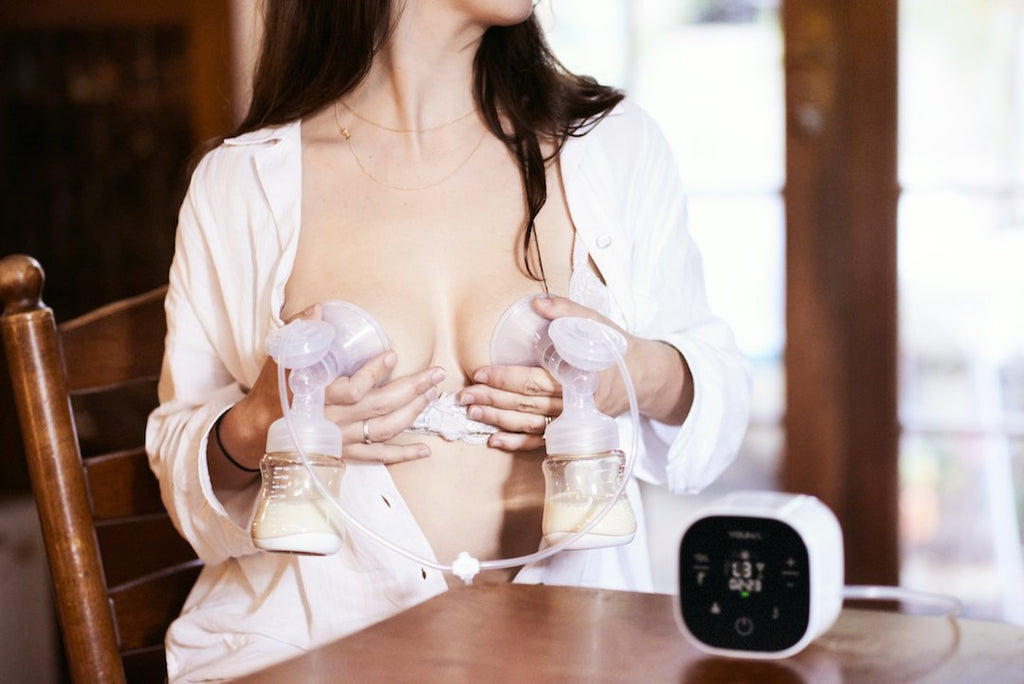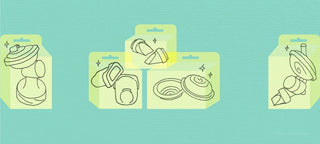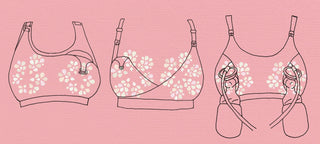Getting the most out of your breast pump is all in how you use it!
Skip the intro, I want the info
Rach's CEO was about 10 minutes into their meeting when a puzzled look crept across his face. He put a pause on proceedings. Rach watched, along with her colleagues, as he then turned to her and asked "Is that you making that buzzing sound?" Ripples of laughter followed as Rach had already flagged with everyone at the start of their meeting that she would be pumping throughout. Back out in the open plan office, the rest of Rach's team was equally oblivious – even a colleague who worked directly opposite her would regularly only realise that she had been pumping when they spied her stowing her milk away in the fridge!
When preparing to resume her role as General Manager after a blissful but short mat leave with her newborn, Rach knew she still had many months before her son's milk needs would begin to taper and so, after an exhaustive search, she set herself up with a wearable pump that she felt she could comfortably use at her desk and around the office. With the right equipment and motivation, surely that was half the battle won, right? Well, turns out there were a raft of other ways Rach was able to support her pumping journey, from the physical side of things to the more practical in nature.
Rach knew her way around her pump, having already been pumping a few times a week to help her son enjoy an easier transition to bottle-feeds from his dad who was to be his primary carer. With her preferred settings worked out, Rach was better able to set and forget once pumping at her desk. Away from the cosy surrounds of her home, Rach soon began to appreciate the benefit of allowing herself a moment to relax her body and breathing when pumping at work, just as she would when she was at home feeding her little one. She found it also would promote her letdown if she turned her mind on the reason she was pumping, and gazed at photos of her beautiful baby. The physical demands of breastfeeding helped Rach to realise how helpful it was for her to keep on top of her hydration to support her body and energy levels. Important too was equipping herself with all that she would need to get her pump and milk to work and back safely.
As in her role at work, Rach's role as a mama required her to lead with purpose and stay on track with the goals she set. For pumping that meant dialling in her set-up and systems for cleaning, storage, and transportation between home and work, looking after her own hydration, tuning into her body regardless of the environment, and maintaining self-compassion and a sense of humour. Over time, Rach found she was able to slowly drop pumping sessions at work until eventually her little one's needs were satisfied with direct feeds outside of work hours.
Breast pumps offer us unprecedented convenience. So, when everyone's pumping experience is unique, how can you best set yourself up for a successful pumping journey?

Breast pumps are indispensable to those of us who rely on them to establish, maintain or prolong our breastfeeding journey. Whether you're just starting out or want to supercharge your pumping, we're going to give you a leg up the learning curve with our in-house International Board Certified Lactation Consultant (IBCLC) Kate's top tips for getting the most out of your pump, and your time pumping!
Wait, what are the different types of breast pumps?
Well, handheld and traditional electric pumps have been around for decades, for good reason – they're very effective! The bottles they pump directly into sit proud of your body, with their flanges held by your hands or a specialty pumping bra, like this:

More recently, wearable systems that that fit right inside your regular maternity bra have become a convenient option. Some wearables work with your (ideally portable) pump motor via its tubing, and which express your milk into a collection cup. The newer all-in-one wearable breast pumps don't have any tubes and some can even connect to app controls, like this:

Now, all of the tips below relate to the way you use your pump, more so than the type of pump itself. So, they can all apply just as well to traditional electric pumps, wearables, and even hand pumps.
Ok but how do breast pumps work?
All electric breast pumps are designed to be positioned over your nipple and mimic the way your baby naturally uses:
However, the way you use breast pumps can drastically affect their effectiveness, which is why we've compiled Kate's tips for using a pump like a boss further down.
How can a pump support my breastfeeding?
Pumping any, or all, of your milk is breastfeeding. There are plenty of reasons and opportunities to use a pump to support it.
For example, some pump:
- to establish milk supply
- to stimulate production
- exclusively, through choice or need
- so that partners and loved ones can take part in feeds
- when they return to work, so that they can fill the next day's bottles and protect their supply while their little one is in care

What can I do while pumping?
We've heard of pumpers using their breast pumps:
- at the beach
- at the supermarket
- at the footy
- at a party
- at their desk or in meetings at work
- when meditating or stretching
- when pushing a pram or on a walk
- when travelling by car, public transport or plane
- when they have people over
- while chatting to customers, clients or colleagues
- while teaching classes
- while treating patients
- while doing their makeup and hair
- while enjoying a cheeky day, night or weekend "off"
- while they're mowing the lawn (this might not be for everyone!)
Almost anything you can remain reasonably upright or sitting up for is fair game.
How do I maintain my pump?
Pumps have finely tuned mechanisms and use super fine tolerances on their parts to reduce weight and aid efficiency. Over time, pump parts wear out. When they do, each should be replaced according to the manufacturer's recommended timeframe. This will ensure you keep your pump working at its best. Avoid premature wear caused during cleaning by steering clear of UV sterilisers, detergents with essential oils, fragrances and abrasive brushes or scourers.
Other useful things to note about pumping...
It's worth considering the transportation requirements of both your breast pump and expressed breast milk, as pumps will often be able to go with you wherever your day takes you – however far away that may be from a fridge! Once you've pumped you'll need to transfer your milk to, or seal off, your bottle or bag. You'll also want to be able to keep the wet and dry parts of your pump separate. To keep your milk cool if you're out and about for any length of time, an ice pack in a cooler bag or the insulated pocket of your baby bag should do nicely.

IBCLC Kate wanted to share the following advice about making the most of your breast pump/s:
If you want to make your breast pump work overtime for you, these are the key things you can do to support your body's let down reflex, ensure your comfort and make the most of your milk output!
Get the basics right:
- Firstly, always ensure you have the right flange size and that the fit is comfortable for you. Use flange inserts/convertors to achieve this if needed.
- Check that your nipple is centred properly in the flange/insert when preparing to pump, otherwise the suction will not be concentrated where it is required for adequate stimulation and may cause pain or discomfort.
- Wear a comfortable pumping bra (for traditional pumps) or maternity bra (for wearables) and use the straps to adjust the compression of the flange to ensure it forms a seal with the skin on your breast. For wearables, the fit should be firm but not pulling up or down.
- Calm and focus your mind. Don't forget to take a moment to consciously relax your body and mind. These 3-minute square breathing and body scan guides are great for this. Gaze at photos/videos of your little one (or the real deal!) and think about how nourishing and enjoyable your breast milk will be for them. The hormones you activate doing this can help naturally stimulate your letdown.
Level up if need be:
- Apply warmth before pumping or breastfeeding*. Resting a warm (not hot!) flannel or wheat bag on your breasts for 3–5 minutes prior to pumping will help to dilate your milk ducts and promote hormones to help with your let down. You can even leave it on during your pumping session if comfortable/practical to do so.
- Hand massage while pumping* is an effective way of promoting improved milk output, according to research. Use your hands to gently massage the breast when pumping. You can always ask your Lactation Consultant to demonstrate the correct technique if needed.
- Your pump will start in massage mode, which you can adjust to the strongest suction you are comfortable with for use in combination with the hands-on massage and warmth mentioned above until you see/feel your milk letdown. Five minutes in, look at the bottom of the bottle or collection cup to see whether milk has begun to collect – If there is none, stop pumping and check your setup. Check that the valve is secure in the valve base, your nipple is centred properly and your pump is held firmly in place by a well-adjusted bra.
Something extra to try:
- Adjust the settings as your session progresses. You will likely find each pump you use has a huge variety of suction levels and express modes. Take the time to dial in your preferred settings while always ensuring you stay within your comfort level. If you feel you'd benefit from further stimulation you can also try mixed mode, which interleaves massage cycles in between express cycles. In the cases where your pump has a motor for each side, like wearables, you may also be able to tailor the settings for left and right independently.
- Top up your own hydration. Breastfeeding is thirsty work! Look after your water intake by taking your need to pump as a cue to grab your water bottle or pour yourself a glass of water to replenish your system during your pumping session.
- Consider using vibration to initiate your letdown*. If you are still struggling to get letdown from the tips above consider a vibrating and warming Milkdrop Lactation Massager or similar. Many exclusive pumpers report vibration helps to stimulate a letdown and support milk removal.

*Avoid these steps if you are experiencing a blocked duct, you unlucky creature.
Only for wearables:
- Pump until you reach your usual output. Be prepared to add 10–15mins extra time on top of your usual session time as wearables can (though don't always) take a few weeks for your body to adjust to. This is way less inconvenient than it sounds as wearables tuck neatly away in your bra while you get on with your day.
Wrap-up: How to use a breast pump like a boss

Getting the most out of your breast pump is as simple as using it with awareness, patience, and self-compassion. Pump like a boss by dialling in your size, position, settings, headspace and always prioritising your comfort. If you're thinking of using, or finding that you need to use, a breast pump during your breastfeeding journey, give these tips a go. You deserve to enjoy using your pump and the power it can give you to take control of your breastfeeding journey.
Use the share button and share this blog on how to get the most out of your pump and help others in your life maximise the comfort, efficiency and output they can experience from pumping.

Yes, that Rach!
Owner and founder of Youha Australia, Rach's experience pumping for her young son with her Youha The ONE and Express Cups was so overwhelmingly positive that in 2020, she brought the well-established brand to Australia and New Zealand for others pumpers to enjoy (what a legend!)
Thanks for your advice Kate!
Our in-house expert Kate is a Registered Nurse and International Board Certified Lactation Consultant with over 8 years of experience in both Community Paediatric and Neonatal Nursing (damn, girl!)
Kate is working with Youha in our joint aim to educate, empower and support you to meet your pumping/feeding goals.
You can view Kate's Bio in our Expert Directory to learn more.
Just a friendly reminder that this blog provides general information and is not intended and should not be considered, nor used as a substitute for, medical advice, diagnosis or treatment. If in doubt, please always consult your healthcare professional.




